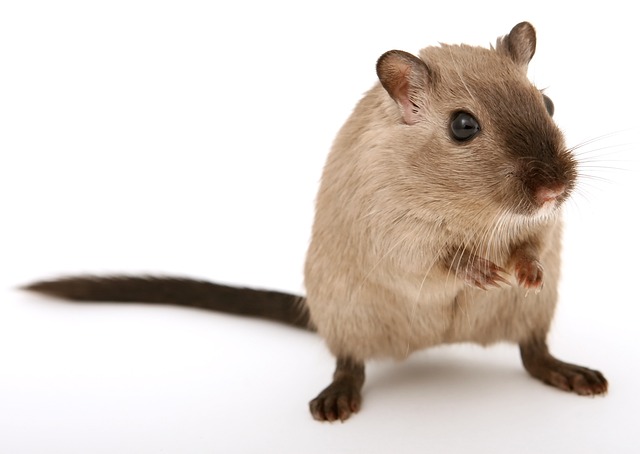Discovering mouse droppings in your home can be unsettling, to say the least. It’s an undeniable sign that unwelcome guests may share your living space. However, what can be even more perplexing is when you find mouse droppings but no actual mouse in sight.
In this extensive guide, we’ll unravel the mystery behind this common scenario, covering possible reasons, health concerns, prevention methods, and steps to take if you suspect you have a hidden mouse problem.
Let’s Identify What You Saw
Mouse droppings are like nature’s breadcrumbs, giving us clues about potential furry visitors in our homes. These tiny, cylindrical pellets are typically dark brown or black, resembling rice grains, and measure about 1/4 to 1/2 inch in length. When fresh, they are moist and soft but can become brittle over time.
Homeowners must identify mouse droppings accurately, as they signal a possible mouse presence. However, other culprits can sometimes be mistaken for these telltale signs:
- Cockroach Droppings: These miniature brown or black specks closely resemble mouse droppings in size and shape. Cockroach droppings might vary slightly depending on the cockroach species.
- Bat Guano: If you have bats as uninvited guests in your attic, their droppings, known as guano, can resemble mouse droppings. Bat guano is usually a bit larger and has a grainier texture.
- Rat Droppings: While similar in color, they are larger and tend to be more oval-shaped. The size difference is often a clear giveaway.
- Insect Frass: Certain insects, such as beetles or termites, may leave behind frass—a mixture of feces and the materials they’ve been dining on. Frass can sometimes be mistaken for mouse droppings, but it usually has a different texture and may include fragments of the insects’ food.
- Debris and Dirt: Sometimes, tiny bits of dirt or random debris can be mistakenly identified as mouse droppings. However, these usually lack the consistent size and shape of genuine droppings.
Comparing your findings to online images or consulting with a pest control professional can provide a definitive answer.
Remember, if you find mouse droppings, addressing the potential mouse issue promptly is essential to prevent further complications in your home.
Found Mouse Droppings But No Mouse? Here’s Why.
Finding mouse droppings in your home without any other signs of mice can be puzzling, but it’s not uncommon. There are several reasons why homeowners may come across mouse droppings without noticing other signs of a mouse infestation:
- Limited Activity: Mice are nocturnal creatures and tend to be most active at night when homeowners are asleep. If their activity is sporadic or they primarily come out when no one is around, it can be challenging to spot them in action.
- Hiding Places: Mice are excellent at finding hiding places in your home, such as behind walls, under floors, or tight spaces. They may build nests in these secluded areas and only venture out briefly to forage for food.
- Small Infestation: In some cases, only a few mice may be present in your home. A small infestation can generate limited droppings, making them less conspicuous.
- Effective Cleaning Habits: Some homeowners maintain rigorous cleaning routines, which can quickly remove mouse droppings and other signs of an infestation before they become noticeable.
- Fresh Infestation: You might have recently discovered the droppings shortly after mice entered your home. If this is the case, it can take time for other signs, such as gnawed food packaging or visible nests, to become apparent.
- Other Signs Overlooked: Further signs of mouse activity may have gone unnoticed. These could include faint scratching or rustling in walls or ceilings, which are easily dismissed or attributed to other causes.
- Inaccessible Areas: Mice can access areas difficult for homeowners to inspect, such as crawlspaces, attics, and wall voids. They may leave droppings in these hidden spaces.
- Human Activity: Loud noises, bright lights, or the presence of humans can deter mice from venturing into visible areas, limiting their exposure and making it more challenging to detect them.
In cases where you’ve found mouse droppings but no mouse, it’s essential to remain vigilant. Continue monitoring for additional evidence, set traps where you suspect mouse activity, and consider sealing potential entry points to prevent further infestations.
If the issue persists or worsens, it’s advisable to consult with a pest control professional to conduct a thorough inspection and address the problem effectively.
Preventing and Eliminating Mice
Preventing and discouraging mouse infestations in your home is crucial to maintaining a clean and healthy living environment. Here’s an overview of steps homeowners can take to achieve this, including the benefits of trusting professional pest control services like United States Pest Service:
1. Maintain Cleanliness:
- Keep your home clean by regularly sweeping, vacuuming, and wiping down surfaces.
- Store food in airtight containers to eliminate easy access for mice.
- Clean up crumbs and spills promptly, as they attract rodents.
2. Eliminate Entry Points:
- Seal gaps, cracks, and holes in walls, floors, and foundations to prevent mice from entering your home.
- Pay special attention to doors, windows, and areas around utility pipes.
3. Secure Trash and Compost:
- Use tightly sealed trash cans indoors and outdoors to prevent mice from foraging for food.
- Compost bins should be rodent-resistant and positioned away from your home.
4. Yard Maintenance:
- Keep your yard well-maintained by trimming overgrown vegetation.
- Remove debris that could provide hiding places for mice.
5. Regular Inspections:
- Regularly inspect your home’s interior for signs of mice, such as droppings, gnaw marks, or nests.
- Check outdoors for any signs of mice or areas where they may sneak inside.
6. Proper Storage:
- Store firewood, building materials, and clutter away from your home’s foundation to reduce hiding places for mice.
- Keep outdoor animal food (dog, bird, or squirrel food) tightly sealed away from reach.
7. Pest-Resistant Materials:
- Use pest-resistant building materials like steel wool or hardware cloth to block entry points.
- Plug holes or gaps with these items to keep mice away during winter.
For long-term results, turn to a trusted pest control company to eliminate mice and help you scope out potential entry points.
At United States Pest Service, we know a mouse infestation can be a real nuisance. That’s why we’re here to provide you with the most effective and hassle-free solution. With our experienced technicians and cutting-edge pest control methods, we’ve got the expertise to tackle your mouse problem head-on. Contact us today!

